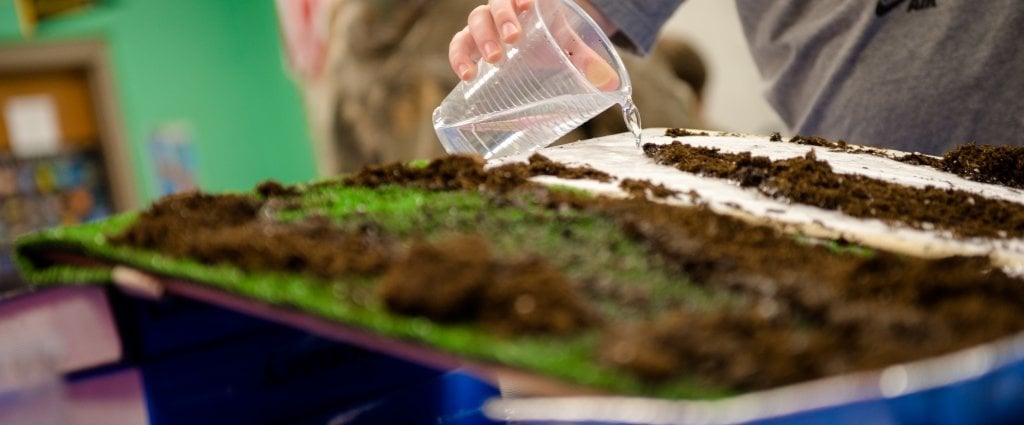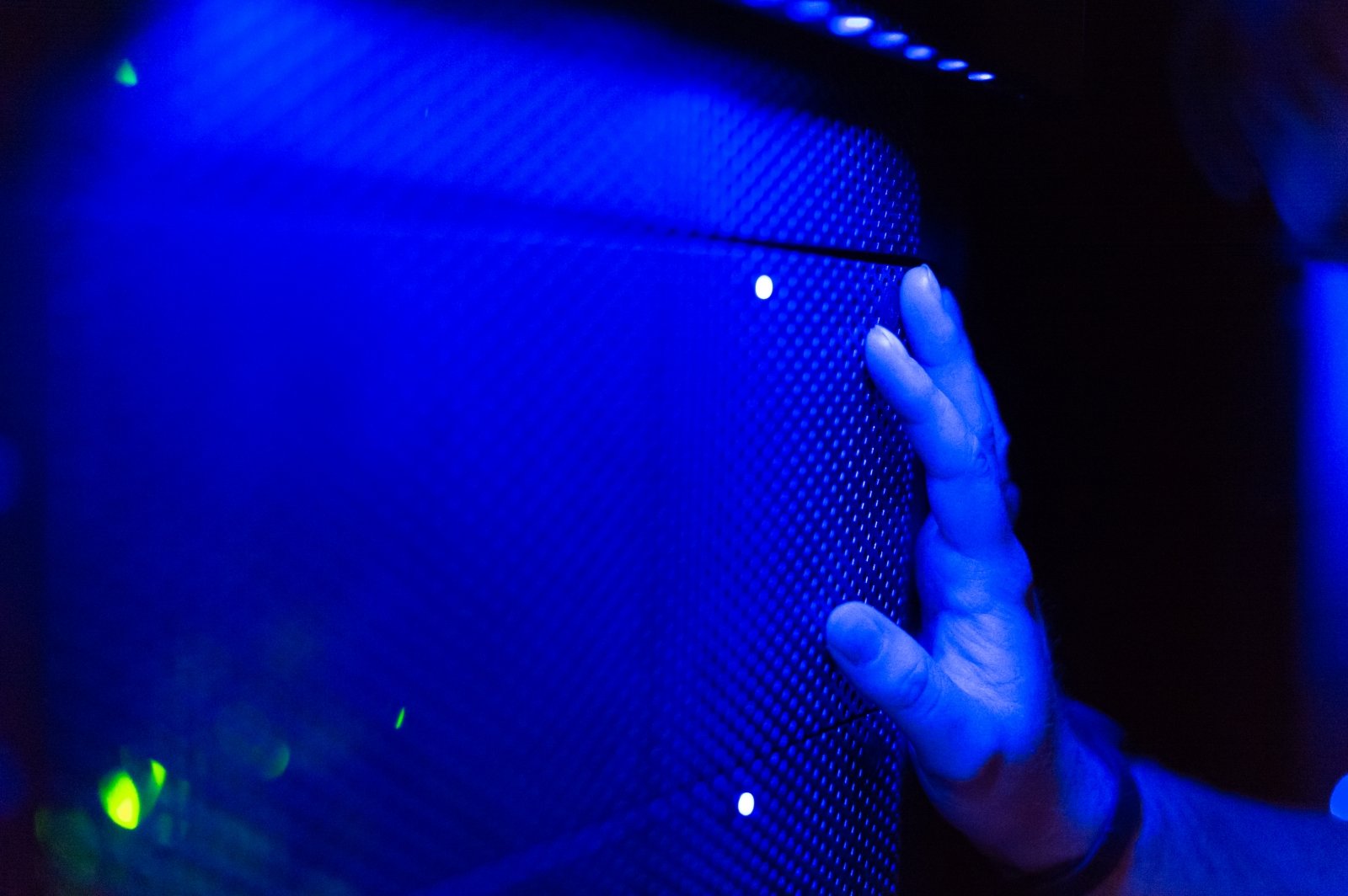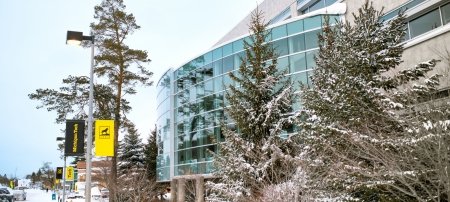Science, technology, engineering, and math are not verbs. But putting STEM—a blend of all four concepts—into action is the best way to help students learn.
Pedagogy, the science of teaching, keeps educators on their toes. They are challenged to create exciting, relevant, and comprehensive environments that promote active, practical learning—preparing people for future jobs and communities.
Which is greatly needed: By 2020, one in five jobs in the state will be STEM-related, reports the State of Michigan Bureau of Labor Market and Strategic Initiatives, which also projects that STEM job opportunities will grow by 11.8 percent, outpacing the expected 8.5 percent increase in other occupations.
Three Michigan Tech initiatives, Mi-STAR, ETS-IMPRESS, and mechatronics, address specific, high-priority state and national goals to improve STEM education. The programs are designed to be affordable, inclusive, and to address career needs for individuals and industry.
Each initiative is an ecosystem—a space full of life, ready to change and evolve. And like a forest, desert, or coral reef, each ecosystem’s growth is shaped greatly by its substrate. These educational ecosystems are nourished by good mentors, who are committed to fostering resilient learners able to weather the storms they will encounter throughout their lives and careers. Looking deeper into these Michigan Tech programs reveals the interconnectedness and organic circuitry that fosters healthy educational environments.
Middle School
Mi-STAR is the Michigan Science Teaching and Assessment Reform. Within a Mi-STAR middle school classroom, it’s readily apparent something is different. Lectures are few and far between; student team projects range from making a smoothie to treat a digestive issue to pouring glasses of water on toy towns to study flooding. The program’s relatable curriculum, which integrates science and engineering, sets it apart.

Started in 2015, the program has grown exponentially from six school districts reaching 1,700 students and 16 teachers, to 132 districts, 65,000 students, and 655 teachers. Mi-STAR aspires to provide a full middle-school curriculum for Michigan schools in the near future that aligns with the Next Generation Science Standards (NGSS) for K-12 education.
Initially funded by the Herbert H. and Grace A. Dow Foundation, Mi-STAR received new support from the National Science Foundation (NSF) and the State of Michigan last year. Barb McIntyre, retired Midland Public Schools teacher, says: “This has got to be one of the most important things the Herbert H. and Grace A. Dow Foundation has ever funded. The difference this has made for underserved students in terms of growth and improved performance is phenomenal.”
Jackie Huntoon, Michigan Tech provost and senior vice president for academic affairs and an inaugural member of the Federal STEM Education Advisory Panel, helps guide Mi-STAR. “Teaching with Mi-STAR can be challenging at first, because teachers have to give students control of the learning process,” Huntoon says, adding that with practice, teachers see changes. “Kids who used to sullenly drag themselves into science class are now eager for class to begin. All students have something valuable to contribute. We know Mi-STAR is making a difference for them.”
"We need to address real-world problems that are of wide interest to 21st-century society."
And for their teachers. Professional development and support are key parts of Mi-STAR. Emily Gochis, Western Upper Peninsula regional director for the MiSTEM Network, based out of the Copper Country Intermediate School District, and a Michigan Tech doctoral student in geoscience, has been with Mi-STAR since the beginning.
“Things are always changing, especially in science,” Gochis says. “There’s new information constantly coming out. Science teachers are challenged in a lot of ways; Mi-STAR empowers them.”
Preparing for Careers
ETS-IMPRESS is Engineering Technology Scholars IMProving Retention and Student Success. It picks up where Mi-STAR and K-12 education leave off; students in the program work on cultivating their engineering careers, no matter their background.
“Our overall goal is to increase student retention and graduation in technology fields, which are vital to the regional and US economy,” says Nasser Alaraje, professor and program chair of the electrical engineering technology program and principal investigator for the project. “In partnership with Michigan Tech’s Pavlis Honors College, ETS-IMPRESS fosters leadership, technical know-how, and employability skills for technology fields that actively recruit and employ graduates from diverse backgrounds and communities.”
Funded by the NSF for five years, the project will award 12 first-time undergraduate engineering technology students with four-year scholarships and 36 community college transfer students from Michigan and neighboring states with two-year scholarships of $4,500 per year. ETS-IMPRESS’ research component investigates how a structured support program influences transfer student performance, retention, and time to graduation.
Making Connections
Mechatronics is a combination of disciplines—mechanical, electrical, computer, and systems engineering, along with telecommunications, robotics, automation, and controls. To bring mechatronics to the classroom, Michigan Tech is partnering with Bay de Noc Community College with funding from the NSF, US Department of Labor, state agencies, and industry. Aleksandr Sergeyev, professor of electrical and computer engineering, is leading the initiative.
“Our program uses complementary, open-source robotics software to teach a general robotics curriculum,” Sergeyev says. Teaching robotics normally requires expensive hardware, so to bring the cost down, Sergeyev tapped the expertise of Scott Kuhl, associate professor of computer science. Kuhl, together with Michigan Tech undergraduate computer science students, designed RunRobot, a free program available on GitHub.
“We wanted to know if it was possible to write a program that was not necessarily as complete as a software package you’d buy, but with enough to help people trying to learn the basics,” Kuhl says.
To some extent, the limitations, namely a lack of specific production features, are an advantage, Sergeyev says, because training only uses 10-15 percent of complex, pricey software. Through RunRobot, inexperienced users can learn to control a robot in a simulated environment, including operating, programming, and object recognition using image processing.
Ecosystems
The routes into STEM are often nonlinear. While Michigan Tech’s new and existing STEM programs are already expanding opportunities across educational levels, there will always be room to grow.
With 655 teachers in training, Mi-STAR continues to serve more schools every year. Mechatronics hopes to grow into an interdisciplinary graduate degree program, addressing a need affirmed by Tesla, GM, Ford, FANUC, and Kaufman Engineered Systems, for midcareer engineers. And ETS-IMPRESS will welcome a new cohort—of many to come—later this year.
Each program is a microcosm of the greater changes happening within STEM education. Together, they demonstrate how Michigan Tech supports, challenges, and prepares students for social mobility
Michigan Technological University is an R1 public research university founded in 1885 in Houghton, and is home to nearly 7,500 students from more than 60 countries around the world. Consistently ranked among the best universities in the country for return on investment, Michigan's flagship technological university offers more than 120 undergraduate and graduate degree programs in science and technology, engineering, computing, forestry, business, health professions, humanities, mathematics, social sciences, and the arts. The rural campus is situated just miles from Lake Superior in Michigan's Upper Peninsula, offering year-round opportunities for outdoor adventure.





